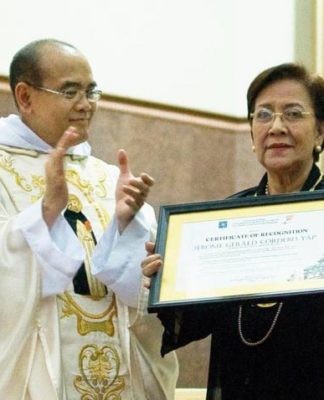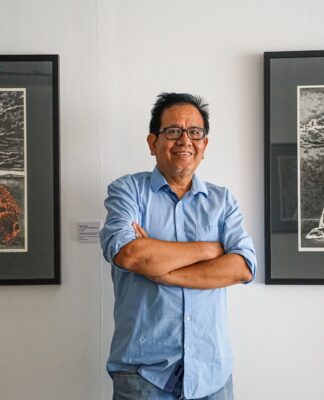“ARE YOU happy?”
This may very well have been the first question posed by Fr. Carlos Alfonso Azpiroz Costa, O.P., master of the 800-yearold Order of Preachers, to his fellow Dominican brothers during his almost two-week stay in the University which ended last Sept. 13.
It was no ordinary visit— but a canonical visitation—and the Dominican pope’s stay in UST was only a leg of a national tour to examine the state of the entire Philippine Dominican Province (as well as the Holy Rosary Province of the Spanish Dominicans) as part of his duties.
Under the Book of Constitutions and Ordinations of the Order of Preachers, Father Azpiroz is required to visitate the whole Order, “either by himself, by his assistants or by others,” at least twice.
The visitation is essential to the governance of the international order, which counts more than 4,400 friars in 50 provinces spread across five continents. The Dominicans are considered the most democratic among the religious orders, with members given the chance to elect their convent priors. The United States constitution is said to be patterned after the highly elaborate but very democratic charter of the Dominicans.
Father Azpiroz’s predecessor, Fr. Timothy Radcliffe O.P., describes visitations in one of his letters as “(t)he principal way in which the Master of the Order strengthens the brethren.” The traditional first question posed by visitators to their brothers is simply whether they are happy.
“The talk is basically about our life as Dominicans and as brothers. The Master would ask what we do, how we are, our hopes, dreams, and the challenges facing us as individuals,” Vice-Rector for Finance Fr. Clarence Victor Marquez, O.P. said in an interview.
Father Azpiroz’s last visitation to the province was in 2003.
But Father Marquez describes the 2003 visit as a “friendly” one and not canonical. Canonical visits, he said, are governed by rules according to the Canon Law.
A canonical visit requires talking to all brethren and issuing directives containing observations and recommendations about the province or an institution. A “friendly” visit, meanwhile, is simply part of a “getting to know” phase, Father Marquez said. Father Azpiroz was elected master in 2001.
Pastoral duties
The 2003 report of visitators sent by the Dominican General Curia in Rome reminded UST friars, particularly regents of faculties and colleges, of their pastoral role as mandated by the University statutes. The report, written by Frs. Dominique Renouard, O.P., and Roger Houngbedji, O.P., noted that University regents were also preoccupied with administrative duties.
The report asked how regents, some of whom are also professors at the Ecclesiastical Faculties, were able to reconcile the functions of administrator, academic, and pastor at the same time. It called for greater influence by the Philippine Province in University affairs and the appointment of more laymen to major posts.
Intervention
This year’s canonical visit saw the sudden resignations of three top University officials, including the Province’s prior provincial, Fr. Edmund Nantes, O.P., over the plan to commercialize and expand UST Hospital. The socius, Fr. Hilario Singian, O.P., was named acting provincial.
The Master of the Order rarely intervenes in the affairs of a province, as it may be “hard for the brethren to bear,” Father Radcliffe said in his May 1997 letter to the Order. It may even appear “as if their democratic right (to) make decisions about their life and mission has been superseded.”
But when the master intervenes, it is “always an attempt to strengthen the brethren, and to help them to be renewed in their freedom and responsibility,” Father Radcliffe said in his letter 10 years ago.
In November 1988, then master Fr. Damian Byrne, O.P. declared it a “mistake” to omit a canonical visitation. “There is great wisdom in the ordinations in our constitutions in this regard. The provinces where visitations have been faithfully carried out witness to it in the life of the brethren,” he wrote.
The founder of the Order, St. Dominic de Guzman, started visitations in 1218, setting up houses for friars and nuns in Spain. Others friars were sent to Paris and Bologna.
In his letters, Father Radcliffe described visitations as central to the tradition of the Dominicans, and a “privilege and a joy” for the Master.
At the end of 2006, the Philippine Province had 121 friars, 12 cooperator-brothers, 42 students, and a bishop.
Father Marquez said visitations are highly anticipated among Dominicans, especially in UST because they highlight the importance of the University in the mission of the Order.
“We always look forward to the Master’s visit because this will motivate us to improve,” Father Marquez said.















